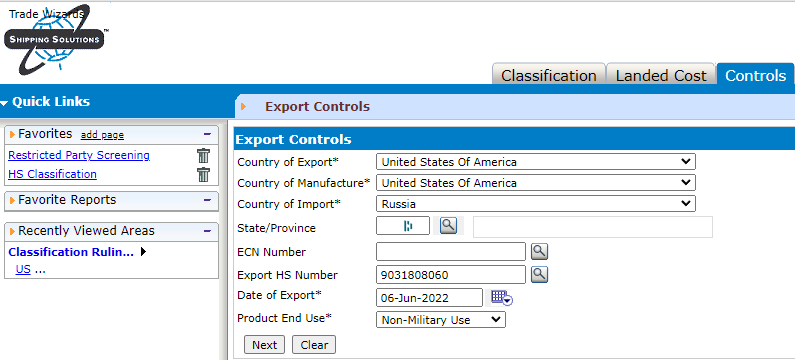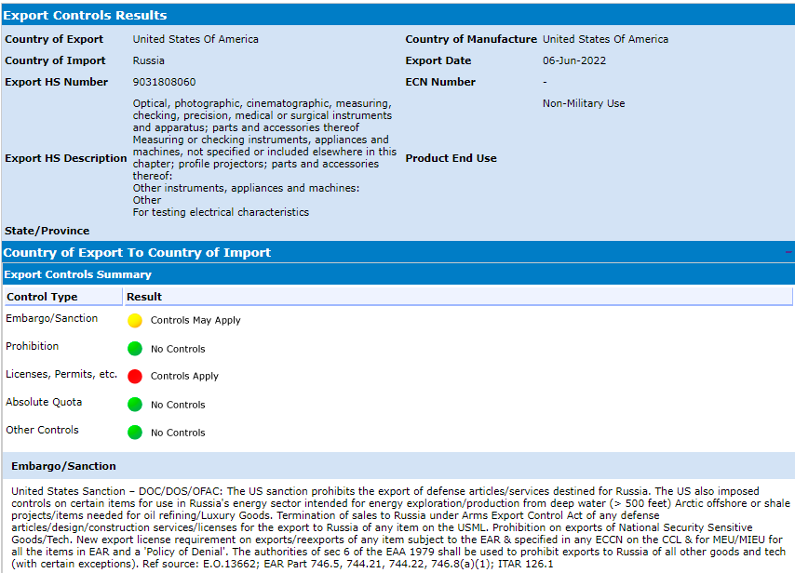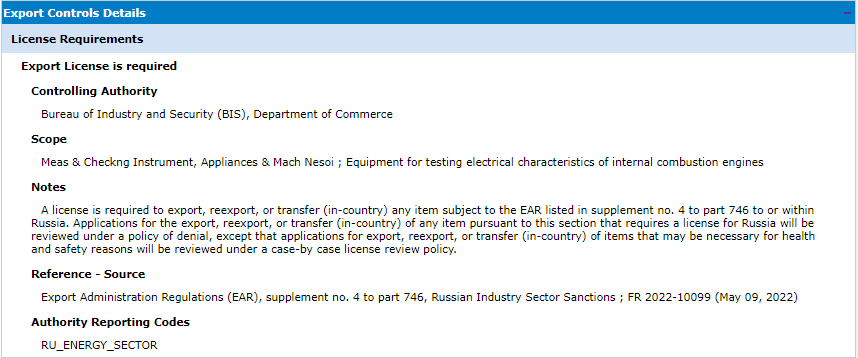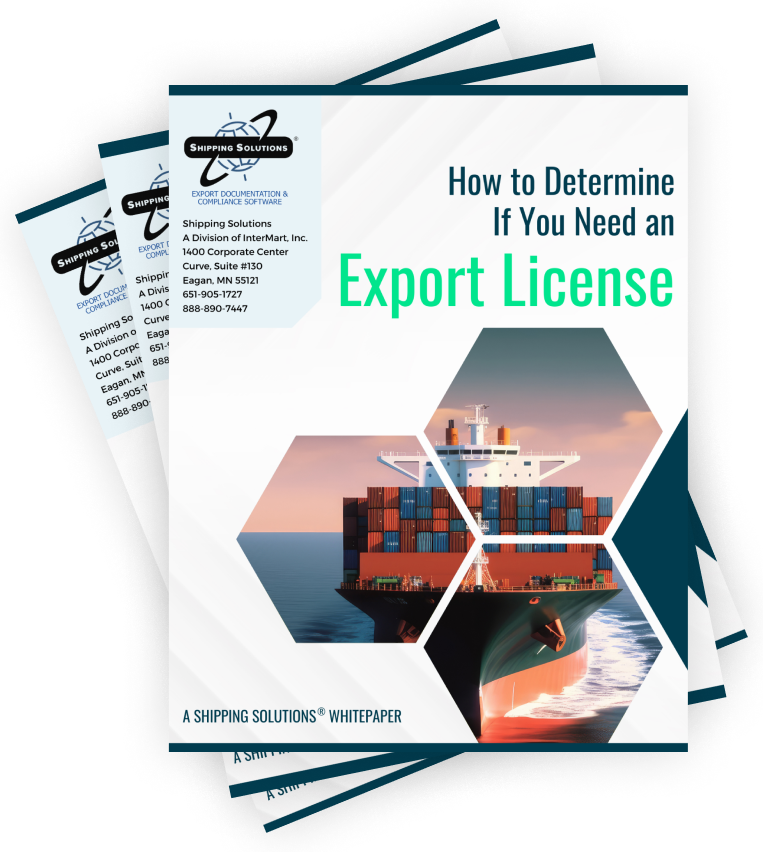The International Trade Blog Export Compliance
Exporters Beware: New Russia Sanctions Based On Schedule B and HTS Codes
On: July 17, 2024 | By:  Kari Crane |
4 min. read
Kari Crane |
4 min. read

The U.S. Department of Commerce's Bureau of Industry and Security (BIS) has announced a series of new export controls to further counter Russian aggression in Ukraine. These measures include a significant focus on restricting the export of more goods destined for Russia and Belarus by using Harmonized Tariff System (HTS) codes and Schedule B codes. This represents a notable shift in the traditional U.S. export control landscape.
Whether or not your shipment requires an export license from the U.S. government has typically been determined by the Export Control Numbers (ECNs) of your products, of which there are two types:
- Export Control Classification Numbers (ECCNs), which are reserved for items considered “dual-use,” meaning they have a commercial use but could be applied in a military or weapons-related use, and which may need a license from the U.S. Department of Commerce depending on the destination country.
- United States Munitions List (USML) Categories, which are reserved for explicitly defense- or space-related items and that always require a license from the U.S. Department of State, regardless of destination country.
The new Russian Industry Sector Sanctions—both those just announced in June 2024 and earlier controls beginning in the wake of Russia’s invasion—are unique in that they are based on Schedule B codes and Harmonized Tariff Schedule (HTS) codes instead of ECNs. Schedule B and HTS are the general commodity schedules for export from and import into the U.S., respectively. They are based on the global Harmonized System (HS), and are designed to be able to classify every product imaginable.
This time around, BIS has added controls on more than 500 additional 6-digit HTS codes, covering 22 entire 2-digit chapters. This means that a wide array of goods that previously may not have been subject to stringent export controls now require a license when destined for Russia or Belarus.
Why Is BIS Using HTS and Schedule B Codes for Sanctions?
BIS explained that it is adding controls to hundreds of HTS codes to keep exporters from changing the classification of an item that requires a license to the classification of a similar item with an HTS code that does not require a license. But remember, if you misclassify your product, you’re committing fraud and could face delays, fines or other penalties.
Learn how to properly classify your products in our free guide, Classifying Your Products for International Trade: The Harmonized System, Harmonized Tariff Schedule and Schedule B Codes.
How to Determine If Your Products Need an Export License
How can U.S. exporters keep abreast of so many new restrictions? The Shipping Solutions Export Controls Software has been updated to reflect the new restrictions. Running a screening is easy (try it for yourself here):

1. Run Export Screening
Enter the Schedule B number for your product as well as other basic information in the Export Controls Software main screen. In this example, we have entered the Schedule B number 9031.80.8060 - Equipment For Testing Electrical Characteristics Of Internal Combustion Engines. Click the Next button.

2. Review Screening Results
Shipping Solutions returns your results. The top of the screen summarizes the details of the product you entered into the Export Controls Software. The Export Controls Summary clearly indicates if any restrictions apply. In our example, an embargo/sanction may apply, and an export license is definitely required. The bottom of the screen provides more details to help you determine if an embargo or sanction applies to your specific export situation.

3. Reference Export Regulations
The Export Controls Detail section of the screening results explains why in the case of this Schedule B code an export license is required. The Export Control Software will also provide the references you need to confirm your screening results.
Sign Up for a Trial Subscription
Want a closer look at how the Export Controls Software can help your company stay compliant with export regulations? Register here for a free trial subscription.
Or if you have questions, sign up here for a free online demonstration. We'd love to show you how all of our compliance software—including our Restricted Party Screening Software and Product Classification Software—can keep you compliant with the new restrictions. In either case, there's absolutely no obligation!
Like what you read? Subscribe today to the International Trade Blog to get the latest news and tips for exporters and importers delivered to your inbox.
This article, originally written by Arnesh Roy in June 2022, has been updated to include current information.

About the Author: Kari Crane
Kari Crane is the editor of Passages: The International Trade Blog. Kari joined Shipping Solutions after working as an editor, writer and designer at a major market newspaper in Texas. Kari has spent her career finding different ways to tell stories and make complex topics easy-to-understand, so she loves helping importers and exporters understand how to navigate the complex world of international trade.


